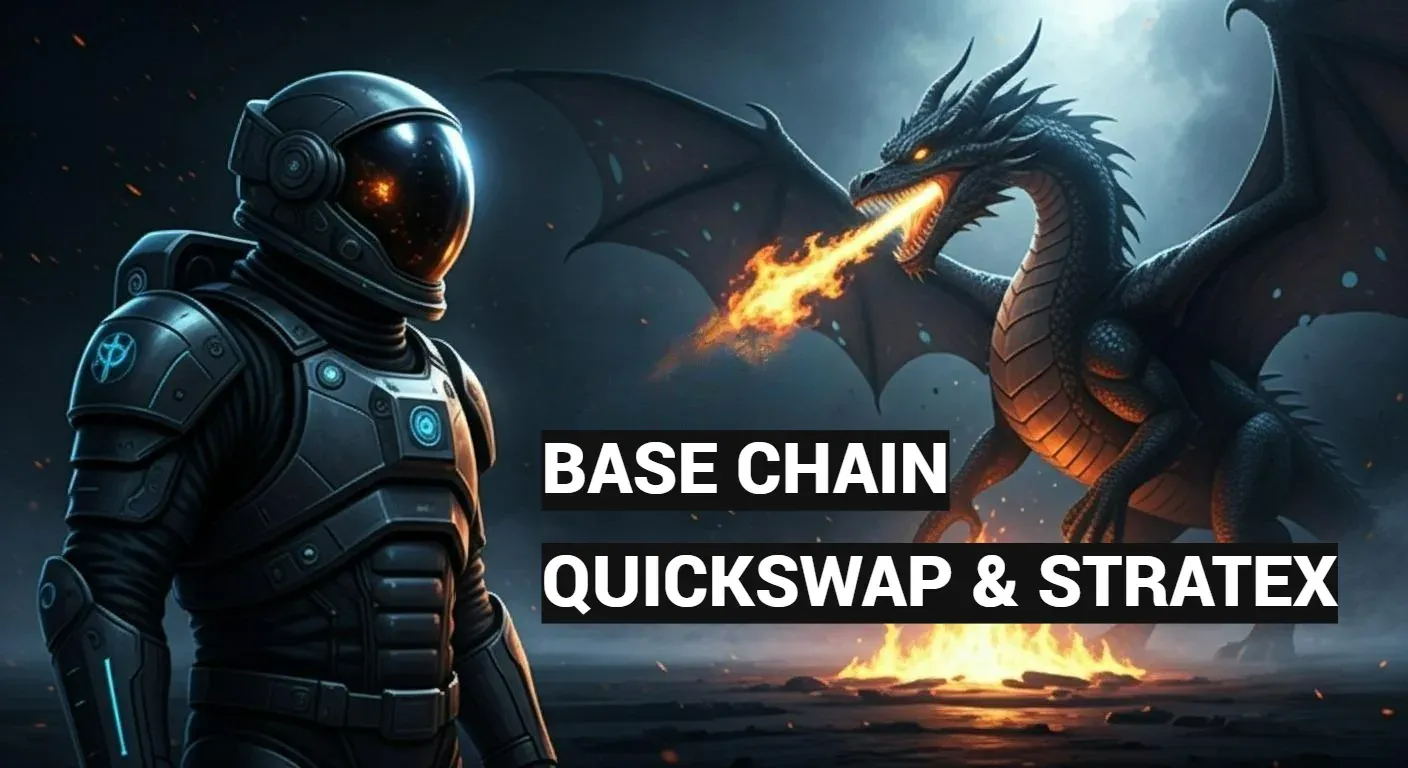Introduction
The Blockchain Revolution
In the rapidly evolving landscape of digital finance and decentralized technologies, blockchain has emerged as a transformative force. This revolutionary technology underpins everything from cryptocurrencies like Bitcoin and Ethereum to complex supply chain solutions and digital identity systems.
At its core, the integrity and functionality of any blockchain network hinge on one critical component: the consensus algorithm.

View the Bitcoin Scalability Guide
Why Consensus Algorithms Are Essential
The cryptocurrency market, a core component of the blockchain industry, was valued at approximately $2 trillion in mid-2024, according to CoinMarketCap. Operating without a central authority, this ecosystem relies on consensus mechanisms to maintain trust and security.
Without a robust consensus mechanism, a decentralized network would quickly descend into chaos, plagued by:
- Conflicting transaction histories
- Complete erosion of trust
- Double-spending attacks
- Network fragmentation
Your Complete Guide to Blockchain Consensus
This comprehensive guide delves deep into the world of blockchain consensus algorithms. We'll explore:
- Foundational principles that necessitate these mechanisms
- The classic "Byzantine Generals Problem"
- Major consensus algorithms from PoW to PoS
- Advanced mechanisms like DPoS, PBFT, and PoA
- Future innovations in consensus technology
By the end of this article, you'll have a profound appreciation for the ingenuity behind these algorithms and their pivotal role in shaping the decentralized future.

View The History of Bitcoin Guide
What Is a Consensus Algorithm?
The Foundation of Distributed Trust
A consensus algorithm is a set of rules and procedures that enables all participants in a distributed network to agree on a single, consistent state of the system.
In blockchain terms, this means agreeing on:
- The validity of transactions
- The order in which they occurred
- The integrity of the entire distributed ledger
Since blockchain networks operate without a central governing body, these algorithms are the very foundation of trust.
The Byzantine Generals Problem: The Genesis of Consensus
Understanding the Classic Problem
The conceptual challenge that consensus algorithms aim to solve is famously illustrated by the "Byzantine Generals Problem." [1]
First introduced in 1982 by computer scientists Leslie Lamport, Robert Shostak, and Marshall Pease, this thought experiment highlights the inherent difficulties of achieving reliable communication and agreement in a distributed system.
The Analogy Explained
Imagine a group of Byzantine generals planning to attack a city:
- They are geographically separated
- They can only communicate by sending messengers
- For success, all loyal generals must attack simultaneously
- Some generals might be traitors sending false messages
The Challenge: How can loyal generals ensure they all agree on a coordinated plan, even with traitors present?
Blockchain Application
In the context of blockchain:
- Generals = Individual nodes (computers) in the network
- Messengers = Transaction broadcasts
- Traitors = Malicious nodes attempting double-spending
- Attack = Adding a new, valid block of transactions
Key Properties of Consensus Algorithms
Effective consensus algorithms in blockchain strive to achieve several critical properties:
1. Safety (Consistency)
- All honest nodes agree on the same ledger state
- Invalid transactions are never confirmed
- Prevents conflicting records
2. Liveness (Progress)
- The network continues to make progress
- Valid transactions are eventually processed
- New blocks are continuously added
3. Fault Tolerance
- Functions correctly even with failed or malicious nodes
- Byzantine Fault Tolerance (BFT) withstands up to one-third faulty nodes
- Maintains network integrity under attack
4. Decentralization
- Distributes decision-making power across many nodes
- Eliminates need for central authority
- Promotes network resilience
5. Immutability
- Recorded transactions are irreversible
- Unchangeable historical record
- Prevents tampering with past data
Why Decentralized Networks Need Consensus
The Trust Challenge
Without a central authority to dictate truth, decentralized networks face unique challenges:
Key Questions:
- How do you prevent double-spending?
- How do you ensure identical ledger copies across thousands of nodes?
- How do you maintain trust between untrusting participants?
The Solution
Consensus algorithms provide the answers by:
- Establishing rules and incentives for honest behavior
- Penalizing malicious actions
- Making cheating economically unfeasible
- Transforming suspicious entities into a cohesive system

Visit The Top 5 Bitcoin Wallets Guide
Proof of Work (PoW)
The Original Blockchain Consensus
Proof of Work (PoW) is the oldest and arguably the most robust consensus mechanism. First conceptualized in 1993 by Cynthia Dwork and Moni Naor, it gained fame through Bitcoin in 2009. [2]
PoW revolutionized how trust could be established in a peer-to-peer network without relying on any central authority.
How Proof of Work Functions
The Mining Process
PoW operates on the principle of computational difficulty. Participants called "miners" compete to solve complex cryptographic puzzles.
Step-by-Step Process:
- Transaction Aggregation
- Miners gather unconfirmed transactions
- Bundle them into a new block
- Hashing and Nonce
- Block data combined with random "nonce"
- Put through cryptographic hash function (SHA-256 for Bitcoin)
- Produces unique digital fingerprint
- The Mining Puzzle
- Find nonce that produces hash with specific difficulty
- Typically requires hash starting with zeros
- Brute-force process requiring massive computation
- Block Propagation
- First successful miner broadcasts block
- Other nodes verify validity
- Block added to blockchain if valid
- Reward and New Round
- Successful miner receives block reward
- Process repeats for next block
Bitcoin’s PoW Implementation
Difficulty Adjustment Mechanism
Bitcoin’s PoW is meticulously designed for consistency:
- Automatic adjustment every 2,016 blocks (~2 weeks)
- Accounts for changes in total network hash rate
- Maintains 10-minute average block time
- Prevents inflation/deflation issues
Network Security Statistics
As of August 2025, Bitcoin’s hash rate exceeds 650 exahashes per second, according to Blockchain.com, representing staggering energy and hardware investment that creates a formidable barrier to attack and makes network control economically unfeasible.
Security Advantages of Proof of Work
Unparalleled Security
PoW offers the highest level of proven security due to:
51% Attack Prevention:
- Requires controlling over half the network’s mining power
- Astronomical investment in hardware and electricity
- Economically irrational for large networks like Bitcoin
- Attacker’s investment jeopardized by the attack itself
Longest Chain Rule:
- Network converges on chain with most proof of work
- Resolves temporary forks automatically
- Makes reversing transactions extremely difficult
- Ensures single, consistent history
The Energy Consumption Debate
The Environmental Concern
PoW faces significant criticism for high energy consumption:
- Bitcoin’s annual energy consumption, estimated at 150 TWh in 2024 by the Cambridge Bitcoin Electricity Consumption Index, is comparable to countries like Poland or Malaysia.
- Raises environmental and carbon footprint concerns
- Sparks debate among environmentalists and policymakers
Proponent Arguments
Security Justification:
- Energy consumption directly proportional to security
- Cost of maintaining decentralized, censorship-resistant ledger
- Traditional financial systems also have massive energy footprint
Renewable Energy Adoption:
- Growing portion powered by renewable sources
- Miners seek cheap renewable energy (hydro, solar, wind)
- Can incentivize new renewable infrastructure development
Innovation Driver:
- Competitive mining drives energy efficiency innovation
- Constant search for efficient hardware and cheaper energy
- Contributes to energy technology advancement
Other Notable PoW Implementations
Major PoW Cryptocurrencies
Litecoin (LTC):
- Uses Scrypt hashing algorithm
- More memory-intensive than Bitcoin’s SHA-256
- Originally more accessible for CPU/GPU mining
Dogecoin (DOGE):
- Also utilizes Scrypt algorithm
- Shares mining process with Litecoin
- Originally created as meme coin
Monero (XMR):
- Employs RandomX algorithm
- ASIC-resistant design
- Promotes CPU mining and decentralization
Ethereum Classic (ETC):
- Continues original Ethereum PoW design
- Maintains after Ethereum’s PoS transition
- Preserves original blockchain principles
Proof of Stake (PoS)
The Energy-Efficient Alternative
Proof of Stake (PoS) emerged as a significant alternative to PoW, primarily addressing energy consumption concerns and scalability limitations.
Instead of computational power, PoS selects validators based on cryptocurrency holdings they’re willing to "stake" as collateral.
How Proof of Stake Functions
The Staking Process
Key Steps:
- Staking
- Users lock cryptocurrency as collateral
- Stake acts as financial guarantee of good behavior
- Validator Selection
- Algorithm selects validator pseudo-randomly
- Considers stake size, duration, and randomization
- Prevents predictability and centralization
- Block Proposal and Attestation
- Selected validator proposes new block
- Other validators verify and attest to validity
- Rewards and Penalties (Slashing)
- Valid blocks earn rewards for validators
- Malicious behavior results in stake slashing
- Economic deterrent against dishonesty
Ethereum’s Historic Transition: The Merge
Monumental Blockchain Upgrade
Ethereum’s transition from PoW to PoS represents the most significant event in PoS history:
The Merge (September 2022):
- Ethereum Mainnet merged with Beacon Chain
- Replaced energy-intensive mining with staking
- Reduced energy consumption by approximately 99.95%, according to the Ethereum Foundation and Digiconomist (2023).
- Positioned Ethereum as environmentally sustainable
Impact:
- Second-largest cryptocurrency by market cap
- Backbone of vast dApp ecosystem
- Laid groundwork for future scaling (sharding)
- Set new industry standard for sustainability
Advantages of PoS over PoW
1. Superior Energy Efficiency
- Eliminates competitive computational mining
- Drastically reduces environmental footprint
- More sustainable blockchain operation
- Addresses major PoW criticism
2. Enhanced Scalability Potential
- Higher transaction throughput (TPS)
- Faster block finality
- No mining bottleneck
- Enables advanced scaling solutions like sharding
3. Lower Barrier to Entry
- No expensive mining hardware required
- More accessible to broader range of participants
- Potentially greater decentralization
- Democratic participation in network security
4. Stronger Economic Security
- Validators stake valuable cryptocurrency
- Malicious behavior results in financial loss
- Economic incentives align with network health
- Self-defeating nature of attacks
Current PoS Adoption and Examples
Major PoS Networks
Cardano (ADA):
- Uses Ouroboros PoS protocol
- Peer-reviewed academic approach
- Strong security guarantees
Solana (SOL):
- Combines PoS with Proof of History
- Extremely high transaction speeds
- Popular for dApps and NFTs
Polkadot (DOT):
- Nominated Proof of Stake (NPoS)
- Nominators back validators with stake
- Maximizes security and decentralization
Avalanche (AVAX):
- Novel Avalanche consensus protocol
- High throughput and rapid finality
- Subnet architecture for customization
Delegated Proof of Stake (DPoS)
Democratic Blockchain Governance
Delegated Proof of Stake (DPoS) is an advanced PoS variant introduced by Daniel Larimer in 2014. It significantly improves scalability through a democratic voting system where token holders elect representatives.
How DPoS Functions
The Delegation Process
Key Components:
- Voting by Token Holders
- Stake cryptocurrency to gain voting power
- Vote weight proportional to stake amount
- Democratic selection of delegates
- Election of Delegates
- Fixed number of candidates elected (21, 101, etc.)
- Most voted candidates become active delegates
- Responsible for network maintenance
- Scheduled Block Production
- Delegates take turns in predetermined order
- Eliminates competitive mining
- Achieves very fast block confirmation
- Accountability and Removal
- Continuous community oversight
- Malicious delegates can be voted out
- Incentivizes honest, efficient behavior
Scalability and Efficiency Benefits
Performance Advantages
High Transaction Throughput:
- Thousands to tens of thousands of TPS
- Near-instant transaction finality
- Suitable for high-frequency applications
Reduced Communication Overhead:
- Small, elected group of validators
- Minimized consensus communication
- Streamlined block production process
Use Case Suitability:
- Gaming applications
- Social media platforms
- High-frequency trading
- Decentralized applications requiring speed
Notable DPoS Implementations
Major DPoS Networks
EOS:
- Early prominent DPoS implementation
- Designed for scalable dApp infrastructure
- Aims to support millions of users
TRON (TRX):
- Entertainment-focused blockchain
- Super Representatives elected by TRX holders
- High-performance content platform
Steem/Hive:
- Social blockchain platforms
- Fast, feeless transactions
- Content-driven ecosystems
Potential Centralization Concerns
Challenges and Criticisms
Reduced Decentralization:
- Smaller number of validators than PoW/PoS
- Concentrated block production power
- Potential single points of failure
Collusion Risks:
- Delegates might form cartels
- Manipulation of network governance
- Self-interested behavior
Voter Apathy:
- Lack of active community participation
- Large holders disproportionate influence
- Concentration of voting power
Mitigation Strategies:
- Democratic voting mechanisms
- Quick delegate removal capability
- Additional governance safeguards
- Community education and engagement
Other Consensus Mechanisms
Practical Byzantine Fault Tolerance (PBFT)
Enterprise-Grade Consensus
PBFT was developed by Miguel Castro and Barbara Liskov in 1999, designed for permissioned networks where participants are known. [3]
Key Characteristics:
- Handles up to one-third malicious nodes
- Immediate transaction finality
- High throughput for known participants
- Multi-phase communication protocol
Applications:
- Hyperledger Fabric
- Enterprise blockchains
- Consortium networks
- Private financial systems
Proof of Authority (PoA)
Identity-Based Consensus
PoA prioritizes identity and reputation over computational power or economic stake.
How It Works:
- Pre-selected, authorized validators
- Known entities with verifiable identities
- Validators chosen based on reputation
- Deterministic block production
Advantages:
- Very high transaction speeds
- Minimal energy consumption
- Immediate finality
- Cost-effective operation
Use Cases:
- Private blockchains
- Supply chain management
- Government applications
- Enterprise solutions
Proof of Space and Time (PoST)
The Green Mining Alternative
PoST leverages available disk space instead of computational power or staked capital.
Mechanism:
- Participants allocate hard drive space
- Store cryptographic proofs ("plotting")
- Higher space allocation = higher rewards
- Combines space proof with time proof
Benefits:
- Environmentally friendly
- Accessible to anyone with storage
- Promotes decentralization
- Lower energy consumption
Examples:
- Chia Network (XCH) and Spacemesh use PoST, while Filecoin employs related Proof of Replication and Proof of Spacetime for storage-focused consensus.
Proof of History (PoH)
Solana’s Innovation
PoH creates a verifiable order of events, acting as a cryptographic clock for other consensus mechanisms.
How It Works:
- Continuous hashing sequence
- Each hash depends on previous one
- Creates verifiable timestamp
- Enables parallel transaction processing
Advantages:
- Extremely high throughput
- Reduced communication overhead
- Parallel processing capability
- Enhanced scalability
Comparing Consensus Algorithms
Comprehensive Algorithm Comparison
| Feature | PoW | PoS | DPoS | PBFT | PoA | PoST |
|---|---|---|---|---|---|---|
| Security | Very High | High | Moderate | High | High | Moderate |
| Energy Use | Very High | Very Low | Very Low | Very Low | Very Low | Low |
| Scalability | Low | High | Very High | High* | Very High | Moderate |
| Decentralization | High | High | Moderate | Low | Very Low | High |
| Finality | Probabilistic | Fast | Immediate | Immediate | Immediate | Probabilistic |
| Entry Barrier | High | Moderate | Low | N/A | N/A | Low |
*For permissioned networks
Security Analysis
Proven Track Records
Most Secure:
- Proof of Work - Longest proven track record
- Proof of Stake - Strong economic security model
- PBFT - Excellent for known participants
Security Considerations:
- PoW: Computational cost barrier
- PoS: Economic stake at risk
- DPoS: Community governance dependent
- PBFT: Requires trusted participants
- PoA: Reputation-based trust
- PoST: Storage cost economics
Energy Efficiency Rankings
Environmental Impact
Most Efficient:
- PoA - Minimal computational requirements
- PBFT - Direct communication only
- PoS - No mining competition
- DPoS - Streamlined validation
- PoST - Storage-based, not computation
- PoW - High energy consumption
Scalability Performance
Transaction Throughput
Highest TPS:
- DPoS - 10,000+ TPS possible
- PoA - Very high for private networks
- PBFT - High for permissioned
- PoS - Thousands with sharding
- PoST - Moderate throughput
- PoW - Limited by block time
The Future of Consensus Algorithms
Emerging Innovations
Next-Generation Protocols
Hybrid Consensus Models:
- Combining multiple mechanisms
- Optimizing for specific use cases
- Balancing trade-offs effectively
- Examples: Cardano’s Ouroboros, Zilliqa’s PoW+PBFT
Quantum-Resistant Consensus:
- Preparing for quantum computing threats
- Post-quantum cryptographic primitives
- Long-term security considerations
- Research in early stages
Environmental Sustainability Trends
Green Blockchain Movement
Industry Shift:
- Growing environmental consciousness
- Regulatory pressure for sustainability
- Corporate ESG requirements
- Consumer demand for green solutions
Sustainable Mechanisms:
- PoS adoption acceleration
- PoST development
- Renewable energy integration
- Carbon-neutral blockchain initiatives
Integration with Emerging Technologies
AI and IoT Convergence
Artificial Intelligence:
- Optimized validator selection
- Malicious behavior detection
- Resource management automation
- Predictive network optimization
Internet of Things:
- Lightweight consensus for IoT devices
- Micro-transaction processing
- Edge computing integration
- Scalable device authentication
Regulatory and Governance Evolution
Compliance Considerations
Regulatory Trends:
- Increased oversight, such as the EU’s MiCA framework for crypto assets, alongside emerging environmental and consumer protection regulations.
- Compliance requirements
- Environmental regulations
- Consumer protection measures
Governance Innovation:
- DAO evolution
- On-chain governance mechanisms
- Community-driven development
- Transparent decision-making
Conclusion
The Consensus Revolution
Understanding blockchain consensus algorithms is fundamental to grasping the mechanics, strengths, and limitations of decentralized technologies. From Bitcoin’s energy-intensive yet secure PoW to Ethereum’s environmentally conscious PoS, each mechanism represents a unique solution to achieving trust in trustless environments.
Key Takeaways
No Perfect Solution:
- Each algorithm involves trade-offs
- Optimal choice depends on specific requirements
- Security, scalability, and decentralization balance
- Environmental impact increasingly important
Continuous Evolution:
- Ongoing innovation in consensus mechanisms
- Hybrid approaches gaining popularity
- Integration with emerging technologies
- Regulatory landscape shaping development
Future Outlook:
- More sustainable mechanisms
- Enhanced scalability solutions
- Quantum-resistant preparations
- AI and IoT integration
The Path Forward
The future of blockchain consensus lies in:
- Sustainability - Environmentally responsible mechanisms
- Scalability - Supporting global adoption
- Security - Maintaining trust and integrity
- Innovation - Continuous improvement and adaptation
For anyone looking to understand blockchain’s potential and trajectory, recognizing the pivotal role of consensus algorithms is crucial. They are the silent architects of trust, the guardians of data integrity, and the engines powering the decentralized revolution.
Frequently Asked Questions
What is the primary role of a consensus algorithm in blockchain?
A consensus algorithm ensures all participants in a decentralized blockchain network agree on the single, consistent state of the distributed ledger. Its primary role is to:
- Validate transactions without central authority
- Prevent double-spending attacks
- Maintain network integrity and security
- Synchronize ledger copies across all nodes
- Enable trustless peer-to-peer transactions
How does Proof of Work (PoW) ensure security?
PoW ensures security through computational difficulty:
- Miners solve complex cryptographic puzzles
- Requires significant energy and hardware investment
- Makes 51% attacks economically unfeasible
- Creates immutable transaction history
- Uses "longest chain rule" for consensus
The massive computational power required makes it practically impossible for malicious actors to alter the blockchain.
What are the main advantages of Proof of Stake (PoS) over PoW?
PoS offers several key advantages:
Energy Efficiency:
- 99%+ reduction in energy consumption
- No competitive mining required
- Environmentally sustainable operation
Scalability:
- Higher transaction throughput
- Faster block finality
- Enables sharding and other scaling solutions
Accessibility:
- Lower barrier to entry
- No expensive mining hardware needed
- More democratic participation
Economic Security:
- Validators risk their staked assets
- Malicious behavior results in financial loss
- Self-regulating economic incentives
What is "slashing" in Proof of Stake?
Slashing is a penalty mechanism in PoS that deters malicious behavior:
When It Occurs:
- Validator acts dishonestly (double-signing)
- Proposes invalid blocks
- Goes offline and misses duties
- Attempts to attack the network
Consequences:
- Portion or all of staked cryptocurrency forfeited
- Validator may be removed from network
- Economic disincentive against bad behavior
- Protects network integrity
How does Delegated Proof of Stake (DPoS) differ from traditional PoS?
DPoS introduces democratic representation:
Key Differences:
- Token holders vote for limited number of delegates
- Only elected delegates validate transactions
- Faster consensus with fewer validators
- Higher transaction throughput
- Community governance through voting
Trade-offs:
- Less decentralized than pure PoS
- Potential for delegate collusion
- Requires active community participation
- Faster but more centralized validation
What is the primary use case for Practical Byzantine Fault Tolerance (PBFT)?
PBFT is designed for permissioned blockchain networks:
Ideal Applications:
- Enterprise blockchains
- Consortium networks
- Private financial systems
- Supply chain management
- Government applications
Why It’s Suitable:
- Known, trusted participants
- High transaction throughput
- Immediate finality
- Handles up to 1/3 malicious nodes
- Efficient for smaller networks
Why is Proof of Authority (PoA) considered less decentralized?
PoA sacrifices decentralization for efficiency:
Centralization Factors:
- Pre-approved, known validators only
- Small number of authorized authorities
- Identity-based rather than open participation
- Single points of potential failure
Trade-offs:
- Very high transaction speeds
- Minimal energy consumption
- Suitable for private/consortium blockchains
- Not appropriate for public, trustless networks
How does Proof of Space and Time (PoST) contribute to sustainability?
PoST offers an environmentally friendly alternative:
Sustainability Benefits:
- Uses storage space instead of computation
- Significantly lower energy consumption
- Utilizes existing hard drive capacity
- Reduces carbon footprint
- Accessible to anyone with storage
Mechanism:
- Participants allocate disk space
- Store cryptographic proofs over time
- Rewards based on space commitment
- Green alternative to energy-intensive mining
Can different consensus algorithms be combined?
Yes, hybrid consensus models are increasingly common:
Examples:
- Solana: PoH + PoS (Tower BFT)
- Cardano: Enhanced PoS (Ouroboros)
- Zilliqa: PoW + PBFT combination
Benefits:
- Leverage strengths of multiple mechanisms
- Optimize for specific requirements
- Balance security, scalability, decentralization
- Address individual algorithm weaknesses
Applications:
- Custom blockchain solutions
- Specific industry requirements
- Performance optimization
- Risk mitigation strategies
References:
[1] Lamport, L., Shostak, R., & Pease, M. (1982). The Byzantine Generals Problem. ACM Transactions on Programming Languages and Systems (TOPLAS), 4(3), 382-401. https://dl.acm.org/doi/10.1145/357172.357176
[2] Dwork, C., & Naor, M. (1993). Pricing via Processing or Combatting Junk Mail. In Advances in Cryptology—CRYPTO’93 (pp. 139-147). Springer Berlin Heidelberg.
[3] Castro, M., & Liskov, B. (1999). Practical Byzantine Fault Tolerance. OSDI.
[4] CoinMarketCap. (2025). Cryptocurrency Market Capitalization. https://coinmarketcap.com
[5] Blockchain.com. (2025). Bitcoin Hash Rate. https://www.blockchain.com
[6] Ethereum Foundation (2023). Ethereum Energy Consumption Post-Merge. https://ethereum.org
[7] Cambridge Bitcoin Electricity Consumption Index (CBECI). (2024). Bitcoin Energy Consumption. https://ccaf.io/cbeci
[8] Solana Documentation. (2025). Proof of History and Consensus. https://solana.com/docs
[9] Filecoin Documentation. (2025). Proof of Replication and Spacetime.
[10] EU Markets in Crypto-Assets (MiCA). (2024). Regulatory Framework.
















Discussion